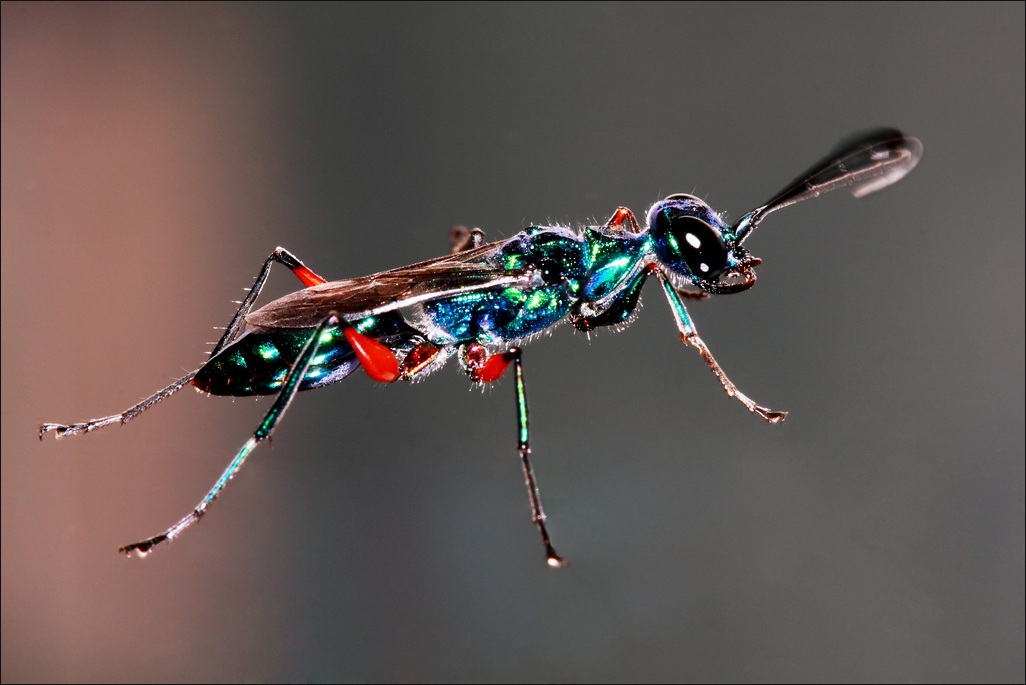Adaptation
Ampulex compressa is incredibly adapted to be an
incredibly successful parasite. Its attack method to disable its
host is flawless and its sting is executed with near surgical
accuracy. In a study on the emerald cockroach wasp, it was
discovered that there are actually tiny sensory receptors at the
end of the wasps stinger that relay electrical messages to its
brain through the axons of neurons (Miller 2004). This
incredible sensory information received from the wasps stinger
is so accurate the wasp can directly sting the cockroach's
thorax in order to paralyze the two front legs. This
temporary paralysis allows for a second, even more precise sting
to the cockroach's ganglia (brain) where the wasp releases its
incapacitating venom. The study also performed a test
introducing a population of emerald cockroach wasps to a group
of cockroaches with their brain removed to see how the wasps would
react. It was found that "in the brainless roaches, the wasps
searched the empty head cavity for an average of 10 minutes. A
radioactive tracer injected into the wasps revealed that when
they finally did sting, they used about 1/6 the usual amount of
venom" (Miller 2004). The wasps' stinger receptors provide such
detailed information it knows when a variable in the stinging
process is out of the ordinary; generally the wasp's sting to the brain
takes less than a minute.
cockroaches with their brain removed to see how the wasps would
react. It was found that "in the brainless roaches, the wasps
searched the empty head cavity for an average of 10 minutes. A
radioactive tracer injected into the wasps revealed that when
they finally did sting, they used about 1/6 the usual amount of
venom" (Miller 2004). The wasps' stinger receptors provide such
detailed information it knows when a variable in the stinging
process is out of the ordinary; generally the wasp's sting to the brain
takes less than a minute.
Not only have these wasps mastered their technique, but their venom as well. For a detailed overview of the effects of emerald cockroach wasp's venom, see interactions.
